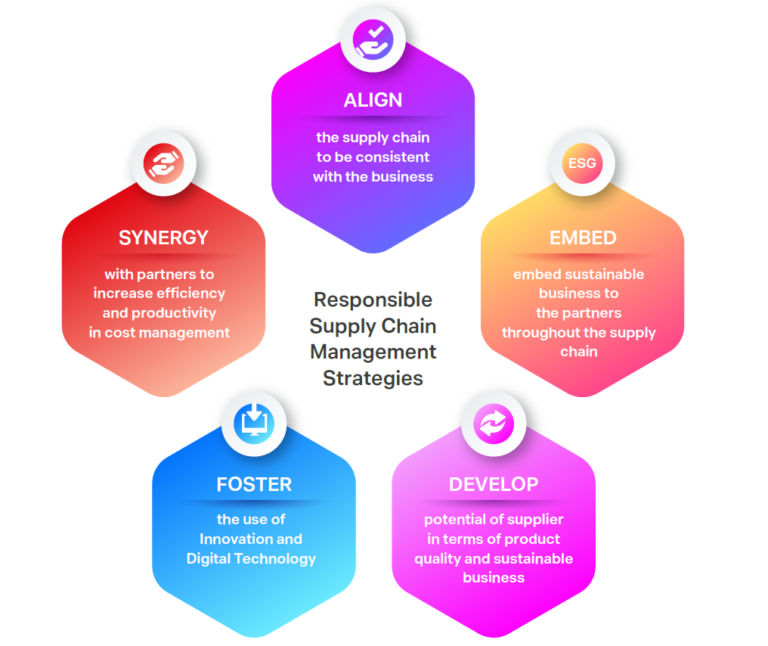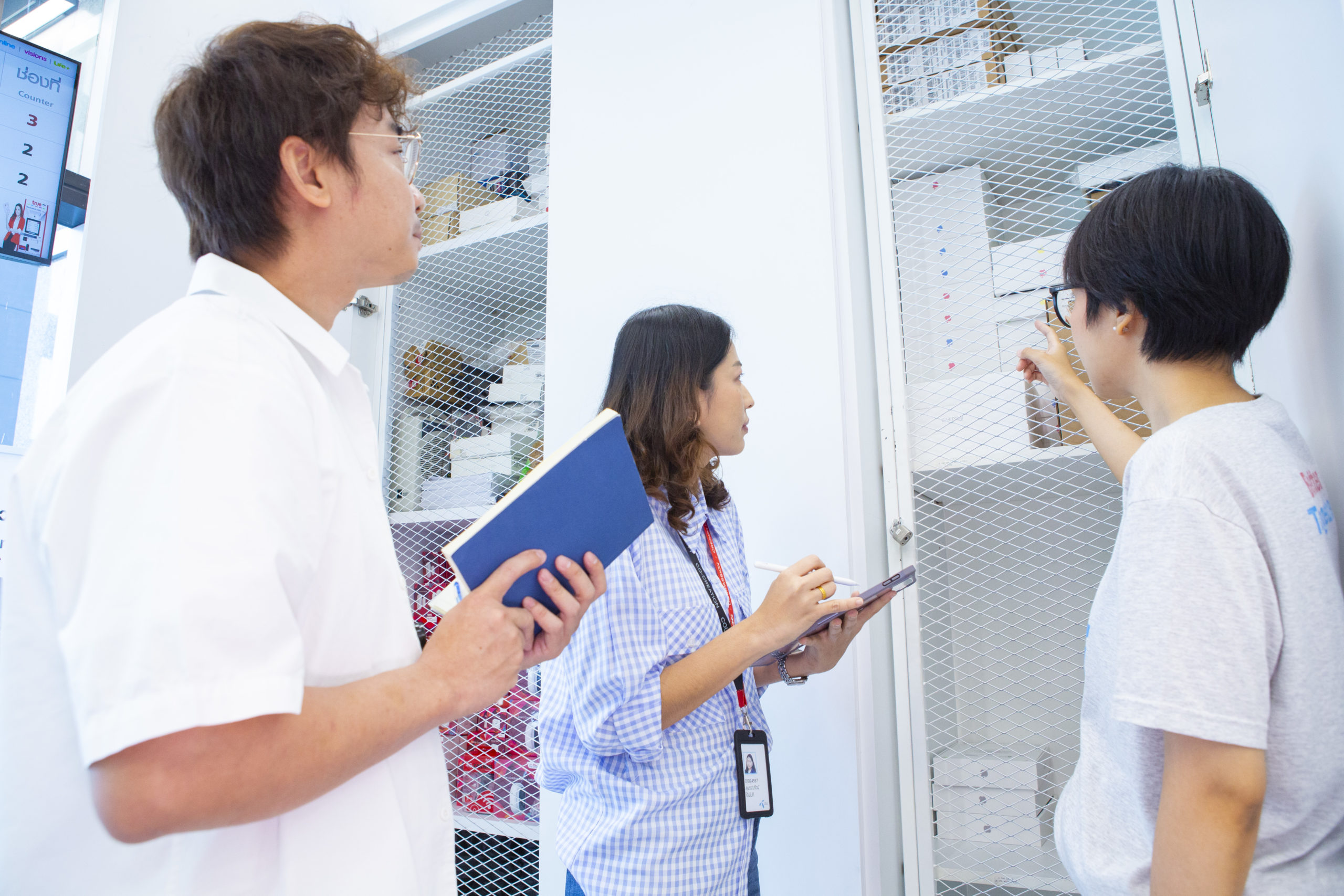MANAGEMENT APPROACH
Driving long-term business sustainability requires collaboration from all sectors throughout the supplier chain, with suppliers being key partners in supporting and co-creating sustainability from upstream to downstream. This must be done in accordance with regulations. True has a Corporate Governance and Sustainability Committee to oversee the achievement of effective supply chain management goals. Manage the procurement of goods and services in accordance with the principles of accuracy under relevant laws, rules and regulations, as well as paying attention to good governance principles. With this in mind, True has established a Business Partner Code of Conduct for suppliers to adhere to the principles of good organization management and encourage suppliers to treat their partners similarly. This is an important mechanism for efficient supply chain management.

SELECTION OF NEW SUPPLIERS
True sets the criteria for selecting new suppliers as follows:
- Results of the online self-assessment on environmental, social and governance dimensions
- Accept adherence to the Business Partner Code of Conduct
- Results of the country-specific, industry specific, and product quality risk assessments
- Results of the business inspections
In addition, suppliers are required to source quality raw materials from reputable sources and refrain from accepting raw materials from sources that violate human rights or are subject to trade sanctions. This includes minerals such as tin (Sn), tantalum (Tn), tungsten (W), and gold (Au) originating from mining operations in countries with documented human rights abuses in Africa, as outlined in the guidelines.
IDENTIFICATION OF KEY SUPPLIERS AND AT-RISK PARTNERS
New suppliers who meet all criteria will undergo a process to identify Significant Tier-1 Suppliers and Significant Tier-1 High-Risk Suppliers, with criteria set for selection based on four criteria, which are:- Suppliers who deliver high-value products and services, analyzed by ‘Spending Analysis’ model
- Suppliers who deliver core products and services to the Company
- Suppliers with few competitors
- Suppliers with high-risks associated with rnvironmental, social and governance (ESG) concerns, including human rights in the supply chain
SUPPLIER TRAINING AND CAPACITY BUILDING
True provides training courses and engagements with suppliers to enhance knowledge and skills, aligning with the Company’s Sustainability Policy, Environmental Policy, Human Rights Policy, Business Partner Management Policy, etc. True organizes an annual seminar “True Suppliers Day” with key suppliers to refresh and reinforce True Sustainability Framework and Goals as well as addressing key issues in the Business Partner Code of Conduct. True also encourages all significant high-risk suppliers to undergo the Human Rights Due Diligence (HRDD) to uplift their business operations. This helps the suppliers mitigate risks and enables them to identify, monitor, prevent and design remedy in case of human rights violations.ON-SITE AUDIT BY THIRD-PARTY
The Company conducts an audit on Significant Tier-1 Suppliers, Significant Tier-1 Suppliers with High Risks, and Significant Tier-2 Suppliers in three dimensions of ESG. The results of the on-site audits are mostly related to the suppliers’ occupational health and safety measures.
To ensure that suppliers have operations accordingly to the specified standards. If significant ESG issues are identified, an investigation will be conducted with the supplier to identify the root causes and corrective measures. A joint assessment will then be conducted after the corrections are made to ensure compliance with the requirements, Significant high-risk partners will undergo assessments annually, while medium- and low-risk ones will be assessed every three years.





